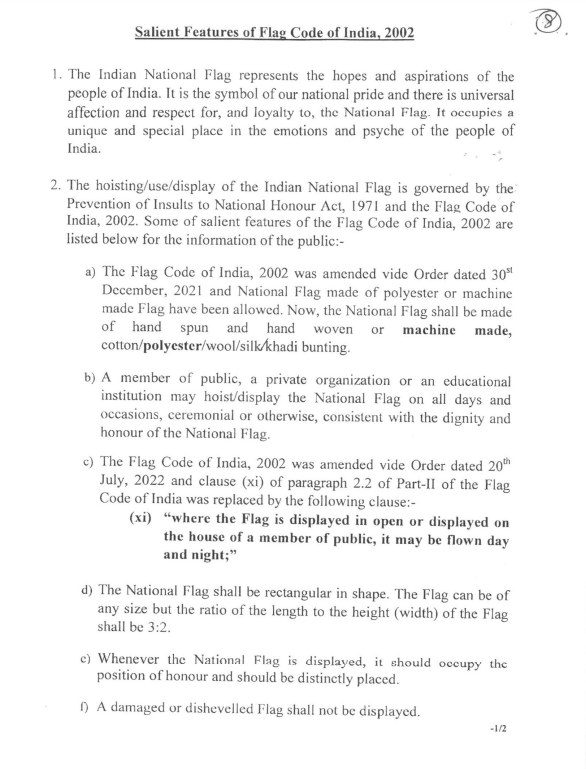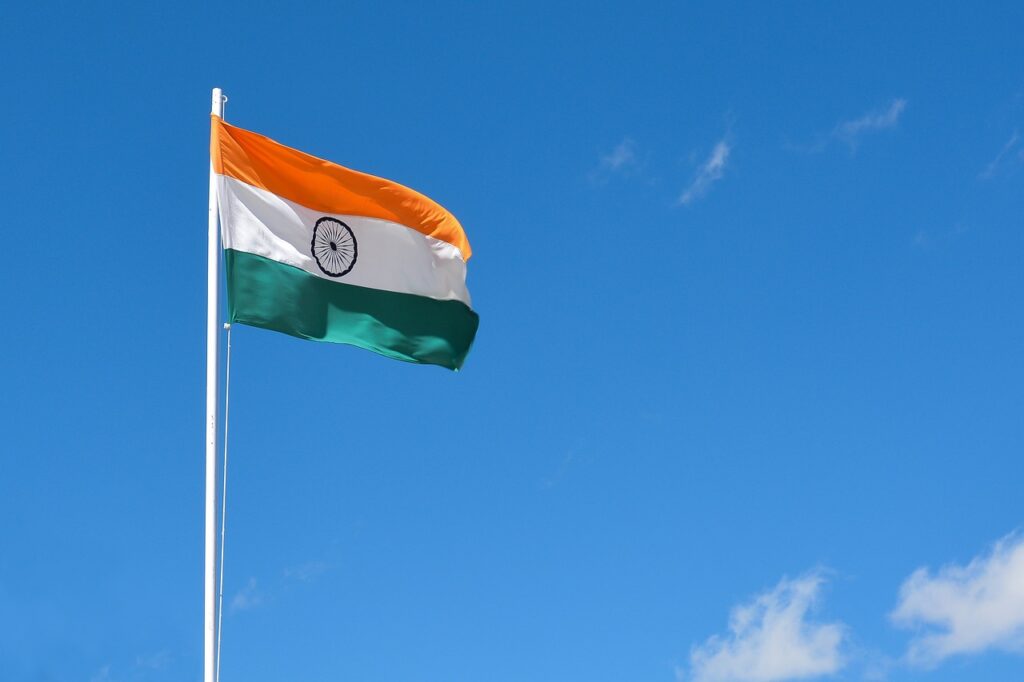
Flag Code of India: A Comprehensive Guide
The Flag Code of India holds significant importance in maintaining the respect, dignity, and honor of the national flag of India, which is a symbol of the country’s sovereignty and unity. It is the set of guidelines governing the use and display of the Indian Tricolor. The Indian national flag is more than just a piece of cloth; it represents the ideals and sacrifices of the people who fought for the nation’s independence. This article aims to provide a comprehensive overview of the Flag Code of India, its history, significance, and the proper procedures for handling and displaying the Indian flag.
What is the Flag Code of India?
The Flag Code of India is a set of rules and regulations that governs the use and display of the national flag. The Code aims to ensure that the flag is used respectfully and in accordance with the laws of the country. It specifies guidelines for the flag’s dimensions, color, display, and handling in various circumstances, including government buildings, private institutions, public events, and in instances of mourning.
The Flag Code is divided into three parts:
- Part I: Provisions related to the display of the national flag by the government and its institutions.
- Part II: Rules for the display of the national flag by private individuals and organizations.
- Part III: General provisions related to the manufacture and specifications of the flag.
History of the Flag Code of India
The Indian national flag has undergone several changes since the country’s independence. The Flag Code of India was first introduced in 2002, consolidating the various laws and regulations related to the flag’s usage, which had been scattered across different acts and guidelines over the years.
Before the Flag Code, the Indian Flags (Restriction) Act, 1950 and The Prevention of Insults to National Honour Act, 1971 outlined the usage of the flag. However, it wasn’t until 2002 that a uniform and comprehensive code for its display and handling was established. This change helped in creating clarity and uniformity in how the flag should be treated and respected.
The Importance of the National Flag
The national flag of India is a symbol of the country’s identity, heritage, and pride. It is a reminder of the struggles and sacrifices made by countless people who fought for India’s independence. The flag consists of three horizontal stripes: saffron at the top (representing courage and sacrifice), white in the middle (representing truth and peace), and green at the bottom (representing faith and chivalry). In the center, there is a 24-spoke wheel, the Ashoka Chakra, which signifies the eternal wheel of law.
When we display or handle the national flag, we must do so with utmost respect. The Flag Code of India is intended to protect and preserve the dignity of the flag as a symbol of national unity.

Guidelines for Displaying the National Flag
The Flag Code of India lays down clear guidelines on how and where the national flag can be displayed:
- Government Buildings: The national flag should be flown in government buildings in a manner that shows respect and dignity. It should always be at the highest point of the building.
- Private Homes and Institutions: The flag can also be displayed at private homes and institutions. However, it must be flown from sunrise to sunset and must be hoisted in such a way that it does not touch the ground or any other object.
- Manner of Display: The flag should never be used for commercial purposes. It should never be torn or damaged in any way. Additionally, it should not be flown during adverse weather conditions unless it is made of a durable material.
- Flag on Vehicles: The flag can be flown on vehicles, but it should only be flown on the right side of the car, with the Ashoka Chakra facing forward. It must not be used on vehicles for commercial purposes or in a way that could dishonor the flag.
- Half-mast for Mourning: The flag is flown at half-mast as a sign of mourning. This is done when there is a national tragedy or the death of a prominent leader. It is crucial that the flag is raised back to the full mast once the mourning period is over.
Who Can Hoist the National Flag?
Under the Flag Code of India, citizens and organizations are allowed to display the national flag, but only following the prescribed guidelines. It was once restricted for private individuals to hoist the flag, but recent changes to the Flag Code in 2022 have made it easier for private citizens to display the national flag. According to the amendment, citizens can now hoist the flag on any day, and not just national holidays, provided they follow the proper guidelines of respectful display.
Key Rules for Handling the National Flag
There are certain do’s and don’ts to keep in mind when handling the national flag:
- Do’s:
- The flag should always be hoisted in such a way that it does not touch the ground or any other object.
- When not in use, the flag should be folded properly and kept with respect.
- The flag should be flown in the correct orientation with the Ashoka Chakra facing forward.
- Don’ts:
- The flag should never be used for any commercial advertisement or purposes.
- It should not be used as clothing or draped over any individual or vehicle.
- The flag should not be flown upside down or damaged in any way.
Recent Changes to the Flag Code
In 2022, the Government of India made some changes to the Flag Code of India to encourage citizens to participate more actively in hoisting the national flag. The changes allowed citizens to hoist the flag at their homes and places of business at any time of the year, not just on Independence Day or Republic Day. The amendment also allowed the flag to be made of polyester or machine-made fabric, which was previously restricted to handwoven and hand-spun materials.
This move was part of a larger initiative to encourage national pride and unity, exemplified by campaigns like Har Ghar Tiranga (Every Home a Flag), launched to encourage Indians to display the flag on national days and other occasions.
Conclusion
The Flag Code of India serves as a vital guide to ensure that the national flag is displayed and treated with the respect and reverence it deserves. It helps preserve the dignity of the flag as a symbol of India’s unity, sovereignty, and integrity. Whether hoisted at government institutions, private homes, or public events, the national flag should always be treated with utmost respect. By following the rules laid out in the Flag Code, citizens can contribute to the honor and pride associated with this powerful national symbol.
